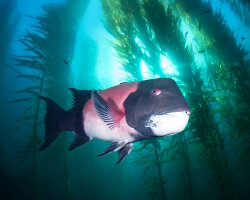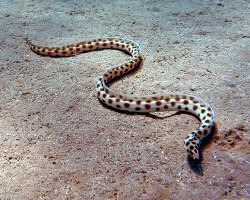Sealife guideThe princess parrotfishScarus taeniopterus
Last updated on 08/07/2025 at 10:44 PM
Taxonomy
- Common name: Princess parrotfish
- French name: Poisson perroquet princesse
- Spanish name: Loro listado,loro ñángaro,loro princesa
- Scientific name: Scarus taeniopterus (Lesson, 1829)
- Family name: Scaridae
- Order name: Perciformes
- Class name: Actinopterygii
Description
The princess parrotfish stands out with a princess-like coloration, featuring a dominant bluish hue complemented by yellow in the central part of its body near the pelvic fins, transitioning into green. Two blue bands run across its head on either side of its eyes.

The princess parrotfish (Scarus taeniopterus)
The princess parrotfish has a beak-shaped jaw, similar to that of a parrot, hence its name.
The princess parrotfish is a fish that measures around 8 inches in length, with a maximum size of about 12 inches.
Geographic range
The princess parrotfish is found in the tropical waters of the western Atlantic Ocean along the coasts from southern
Florida to Venezuela, as well as in the Caribbean region and the Gulf of Mexico.
Habitat
The princess parrotfish typically frequents the shallow waters of coral reefs and seagrass beds. It can be found from the surface down to depths of about 82 feet. As an adult, the princess parrotfish is usually solitary but may form schools.
Diet
The princess parrotfish uses its beak-like jaw to graze on algae attached to corals, playing a role in the health of coral reefs.
Reproduction
The princess parrotfish is a protogynous
hermaphrodite species. After birth, juveniles form small schools and seek shelter in seagrass beds.
Did you know ?
The princess parrotfish is listed as many other marine species within The
IUCN Red List of threatened species. The princess parrotfish appears in the
IUCN Red List since 2012 within the category Least Concern !

The princess parrotfish (Scarus taeniopterus)
Within the same genus
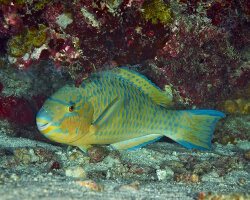
Blue-barred parrotfish
(Scarus ghobban)
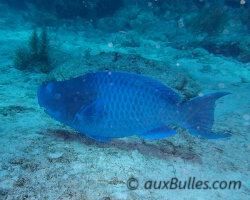
Blue parrotfish
(Scarus coeruleus)

Ember parrotfish
(Scarus rubroviolaceus)
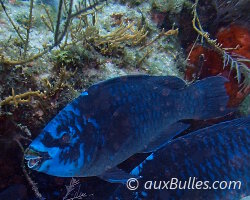
Midnight parrotfish
(Scarus coelestinus)
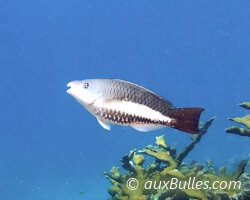
Queen parrotfish
(Scarus vetula)
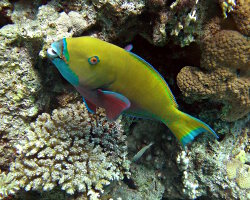
Rusty parrotfish
(Scarus ferrugineus)
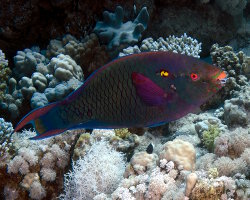
Swarthy Parrotfish
(Scarus niger)
Within the same family

Bumphead parrotfish
(Bolbometopon muricatum)
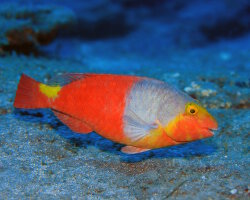
European parrotfish
(Sparisoma cretense)
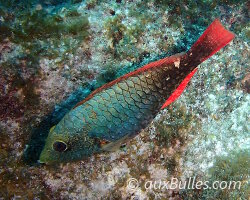
Redband parrotfish
(Sparisoma aurofrenatum)
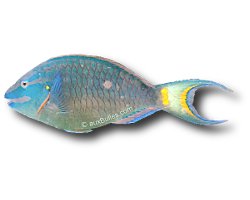
Stoplight parrotfish
(Sparisoma viride)
Discover also

Black grouper
(Mycteroperca bonaci)

Blackbelt hogfish
(Bodianus mesothorax)
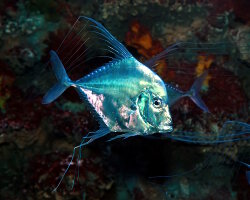
Indian threadfish
(Alectis indica)

Klunzinger's wrasse
(Thalassoma rueppellii)

Ocean triggerfish
(Canthidermis sufflamen)
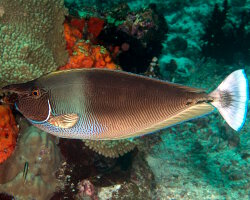
Paletail unicornfish
(Naso brevirostris)

Rosy razorfish
(Xyrichtys martinicensis)

Titan triggerfish
(Balistoides viridescens)
The marine species from Caribbean sea
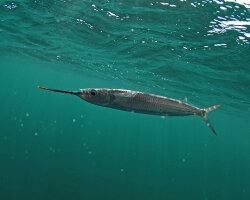
Ballyhoo
(Hemiramphus brasiliensis)
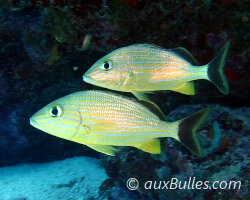
Blue striped grunt
(Haemulon sciurus)
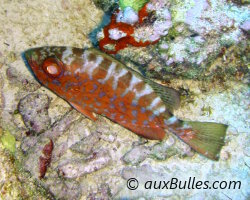
Glasseye snapper
(Heteropriacanthus cruentatus)
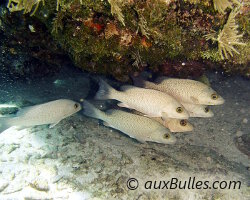
Gray snapper
(Lutjanus griseus)
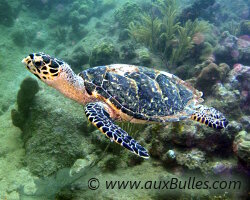
Hawksbill sea turtle
(Eretmochelys imbricata)
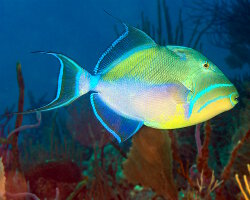
Queen triggerfish
(Balistes vetula)
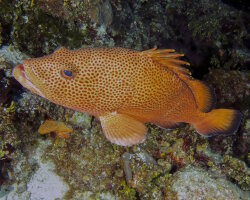
Red hind grouper
(Epinephelus guttatus)

Redband parrotfish
(Sparisoma aurofrenatum)
Dive centers

'Les Ilets' dive center

Noa dive center
































